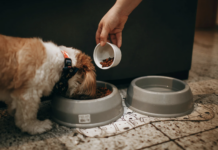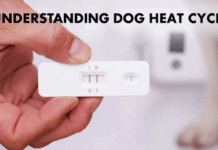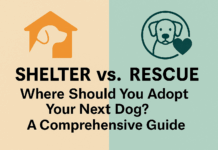Last Updated on September 21, 2024 by Dogs Vets
Designing a Warm Abode for Your Dog
Just in case you were wondering if your dog gets cold in the winter, the answer is a resounding yes! Canines are also at risk of developing frostbite and hypothermia, especially if you take outdoor walks.
The bottom line is you feel uncomfortably chilly when stepping outside, it is also too cold for your dog.
Instead of walking along your usual route, find ways to keep your pooch entertained indoors. Work on designing a snuggly, cozy atmosphere your pets will feel happy to explore and rest in when winter is so cold that they can only spend a few minutes outside daily.
Designing a warm and cozy abode for your dog involves careful consideration of various factors, including size, climate, and materials. Here’s a comprehensive guide to creating a comfortable dog house that keeps your furry friend warm and happy.
Assessing Your Dog’s Needs
Size and Breed Considerations
- Measure Your Dog: Ensure the dog house is spacious enough for your dog to stand, turn around, and stretch comfortably. For puppies, consider future growth when selecting dimensions.
- Breed-Specific Features: Small breeds may prefer snug spaces, while larger breeds often require more room. Research your dog’s breed to tailor the design accordingly.
Age Appropriateness
- Puppies vs. Senior Dogs: Puppies benefit from low entry points, while senior dogs may need features like ramps for easier access.
Climate Considerations
Insulation and Ventilation
- Cold Weather: Insulate the dog house with materials such as foam board or reflective insulation to retain heat during winter months. Adding a heated kennel mat or heat lamp can further enhance warmth.
- Warm Weather: Ensure proper ventilation to prevent overheating. Elevated flooring can help keep the interior cool and dry during hot months.
Construction Materials
Choosing the Right Materials
- Weather-Resistant Wood: Use materials like cedar or redwood for durability against the elements. These woods naturally resist rot and pests.
- Roofing Options: Asphalt shingles or metal roofing provide excellent protection from rain and snow.
Design Features
Elevated Flooring
Elevating the dog house helps prevent moisture from seeping in and keeps your dog dry during rainy weather. Aim for a height of several inches off the ground.
Personal Touches
Consider painting the dog house with non-toxic paint that complements your outdoor decor. Light colors reflect sunlight in warmer climates, while darker colors absorb heat in colder regions. Adding decorative elements or your dog’s name can personalize their space.
More Tips on Designing a Warm Abode for Your Dog
Setting Your Thermostat at the Right Temperature
In general, a comfortable home has a thermostat set at between 68 and 72 degrees Fahrenheit.
Large dogs with thick coats (like huskies) tend to prefer temperatures at the lower end of this spectrum, while short-haired, small dogs will probably enjoy living in warmer interiors. Even if your dog is the only one in the home, the temperature should never be lower than around 60 degrees.
To boost warmth for pups, senior dogs, short-haired or pets with an illness, provide them with a warm bed and extra-soft blankets they enjoy sitting on top of or burrowing under.
You can add pet-safe microwavable heat pads to your dog’s bed or invest in an electric blanket that will remain at a steady temperature all night.
Creating a Wardrobe with Winter Fashions for Your Dog
Unless your dog has super-thick fur, they usually benefit from wearing a quilted jacket and booties on very cold days. A jacket will keep their backs warm, while boots will stop snow and ice from setting between paw pads and causing frostbite.
For chilly weather, consider investing in an ultra-sturdy overall, which protects your dog’s large muscle groups, as well as their vulnerable abdominal area, their chest, and legs.
These often have added features like hoodies, reflectors to boost safety in the dark, and materials that reflect the dog’s body heat and stimulate blood circulation while also being soft, windproof, and waterproof. Some brands even have coats with high necks—which are perfect for greyhounds and other long-necked breeds.
A Plethora of Spots to Rest
Instead of just warming up your dog’s bed, you might prefer to offer him various places in which to snuggle and feel comfortable.
These can include the sofa, patio, and the sunniest spot in your garden (if you live in a relatively warm area). If you have an outdoor dog house, place it in a sunny spot, paint it a dark color, and add insulation to your pooch’s abode.
Remember to install plywood or another hard surface over the insulation, so your dog isn’t tempted to chew it. Blankets are an excellent way to attract your pooch to where you’re setting.
Invest in pretty throws for the couch, purchase at least one ‘designer bed’ with raised features in carved wood or other materials, and fill your couch with large cushions. These can double up as a bed if your dog feels like napping next to you while you’re watching your favorite series.
Installing a Furnace or Solar Heating for Canines
Some heaters are specifically designed for use in a doghouse because they are small but efficient. They have in-built safety features, such as one that protects your dog from burns. They also have chew–proof cord covers.
Consider relying on natural power to keep your dog warm while lowering your carbon footprint. This can be achieved by installing solar panels on the doghouse roof. Once they are installed in a sunny area, attach an inverter and plug it into anything that needs electricity to work—from your dog’s hair dryer to his warming mat, or heated water bowl.
Insulating Your Dog’s House
One of the most important ways to heat your dog’s home is by insulating it.
Firstly, conduct a thorough inspection and cover any gaps or holes in features like the latch mechanisms or ventilation grates. Insulate your pooch’s home with foil-backed foam boards, which are cheap and effective.
Protect your pet from the cold floor by ensuring they are not directly lying on the floor. Instead, place a dog bed inside the house.
If your dog is older, invest in a top orthopedic mattress that will support your pooch’s weight evenly. Reduce the amount of open space in the house by filling it with blankets or big pillows, so the home does contain big pockets of air
Preparing a First-Aid Kit
If your dog goes for walks outside, remember to keep an indoor first-aid kit with components like scissors, gauze, tape, and anti-bacterial cream.
Remember that you may have to cut long hair in the paw area to stop ice from getting caught in it. Your kit should also have paw balm, which has a waxy feel that keeps snow and ice from reaching paws.
If it feels too cold to venture outside, don’t force your pet to do so. Offer her a host of creature comforts at home, including blankets, cushions, and clothing (especially for hairless dogs or cats).
When building a dog house, insulate it well and reduce the amount of free space in the home, to make it warmer and more appealing to them.
Frequently Asked Questions
1. What size should the dog house be?
Answer: The dog house should be large enough for your dog to stand up, turn around, and lie down comfortably. A general guideline is to add 2-4 inches to your dog’s height and length when determining the dimensions. For example, if your dog is 24 inches tall, the house should be at least 26-28 inches tall.
2. How can I insulate my dog house effectively?
Answer: To insulate your dog house, use materials like foam board or reflective insulation on the walls and roof. You can also add straw or blankets as bedding for extra warmth. Ensure that there are no gaps where cold air can enter, and consider using a flap door to help retain heat.
3. Is it better to buy or build a dog house?
Answer: Both options have their advantages. Buying a pre-made dog house can save time and ensure a professional design, while building one allows you to customize it to your dog’s specific needs and your preferences. If you choose to build, ensure you use quality materials and follow best practices for insulation and ventilation.
4. What type of flooring is best for a dog house?
Answer: An elevated wooden floor is ideal as it keeps your dog dry and warm by preventing moisture from seeping in. You can also use rubber mats or carpet for comfort, but make sure they are removable and washable for easy cleaning.
5. How do I keep my dog house cool in summer?
Answer: To keep the dog house cool during hot weather, ensure it has adequate ventilation by incorporating windows or vents. Use light-colored materials that reflect sunlight, and consider placing the house in a shaded area. You can also provide cooling mats or fans to help regulate temperature inside.By addressing these common questions, you can further enhance your understanding of how to create the perfect warm abode for your canine companion!
Facts Check
We hope you enjoyed this article… What are your thoughts? Please feel free to share this article!

















